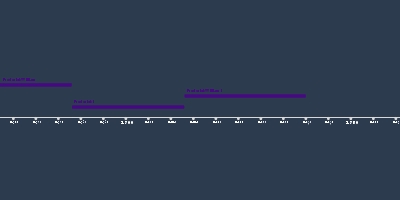The Late Middle Ages (1 jan 1300 ano – 1 jan 1500 ano)
Descrição:
Demographic collapse, political instability, and religious upheavals cause radical changes in Europe.The Black Death, Hundred Years' War, and Great Schism (see other notes) caused significant changes.
In the 1200s, craft guilds had organized production of most goods with workers working side by side. In the 1300s, capitalist investors hired workers, creating a wider gap between classes. The Statute of Laborers froze wages and bound workers to their manors.
Decades of aristocratic violence against the peasantry caused hostility and bitterness. Peasant revolts like the Jacquerie and the English Peasant's Revolt were caused by centuries of exploitation. "Fur-collar crime", in which the upper class preyed on the lower class, was prominent in this era and often involved violence and fraud.
Prostitution and brothels were on the rise. Many men took sex by force, which was seldom punished appropriately. Same-sex relations began to be of more concern. The Office of the Night was established to end sodomy, yet it still developed, especially between an older man and a younger one.
Intra-European colonization and movement caused mixing people of ethnic backgrounds. This era saw a movement away from legal pluralism (native peoples remained subject to their traditional laws yet newcomers were subject to the laws of the countries from which they came) to legal homogeneity. The Statute of Kilkenny restricted English and Irish relations.
This era also experienced an increase in the use of vernacular and the spread of literature. Dante Alighieri's Divine Comedy described travelling throuhgh Hell, Purgatory, and Paradise, and includes comments on secular and ecclesiastical affiars. Geoffrey Chaucer's Canterbury Tales presented a panorama of English social life.
Lay men and women formed confraternities, organized, voluntary lay groups that engaged in prayer and processions.
Adicionado na linha do tempo:
Data:
1 jan 1300 ano
1 jan 1500 ano
~ 200 years
